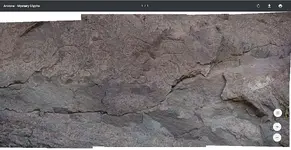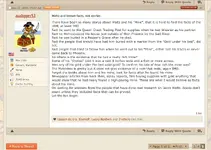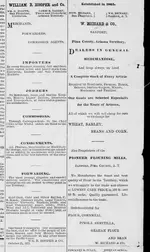sdcfia
Silver Member
Well I don't know if Adamsville is going to prove to be a strong link to the lost Adams, since the town was founded by one Charles Adams, who sold his flour mill around 1870 and opened a saloon in the same town. As it was only a few miles from Florence, where most of the earliest links to Jacob Waltz lead, it is not too promising to link to the lost Adams in my opinion. Waltz is known to have been active in the Bradshaws while the Adams seems to be in the border area of AZ/NM, not to mention the other glaring difference of lode vs placer.
As for the claims of our new friend Rennes, those are interesting photos, and I see no treasure of any kind nor any gold, ore, or even a vein in place. So, not very different from the big majority of the others who claimed to have found the LDM and have nothing to show for it. By the way Rennes, I hope you are not taking this personal. Most of the guys who claim to have solved the stone maps, found the LDM etc get angry at anyone who doubts their story when really if you consider that over 200 different people have all claimed to have found the LDM in over 200 different places, surely not all of them can be right? You are not the first to arrive on the forum to proclaim how stupid we all are and you have the treasure, solved the stones etc. If you took the time to read through the older threads you will find dozens of others have come before you. So please don't take this personal, but show us the treasure if you want us to believe you have it. If you say you found the LDM you will need to show some ore and perhaps the mine with the vein, and get the ore compared to one of the specimens from Waltz if you want everyone to believe you. Otherwise you are just like all the rest.
Please do continue, no offense intended to anyone.



Oro, I wasn't referring to the Lost Adams Diggings vis-á-vis my reference to Adamsville AZ, or more particularly, the surname Adams. As you know, I have provided a boatload of facts that locate the Lost Adams in an obvious spot in NM (which I may make available to a wider audience if I can flesh out the story a bit more to my own satisfaction).
No, I was referring to the "Adams" link to Jacob Waltz in Post #14. If one accepts the detailed research compiled on Waltz's life history - available on TNet and elsewhere - one might entertain the theory that his dog and pony show is yet another example of misdirection and deception pertaining to an alleged cache of precious metal, this one somewhere in the Gila-Salt region of AZ.
Why do I even care about the LDM/PSM rumors? I'll likely never set foot in the Superstitions to try to ferret out any of the specific clues on the ground - I've got plenty of that to do here in NM. As I said earlier: for me, it's the bigger picture. There are many conspiracy theories out there to ponder, but I consider myself a conspiracy analyst, not a theorist. It's my contention that all the major treasure legends are linked.




 ...I believe that transaction occurred in San Fran...I've been down this road of research, trying to verify and untangle what was claimed, and what is the truth. The truth of the matter APPEARS to be that the Bichards bought into that mill long after White originally founded it (1867 is the earliest record I've found, but that doesn't mean earlier ones don't exist, of course), and then they bought White out entirely in the spring of 1867, after which White returned to SF...
...I believe that transaction occurred in San Fran...I've been down this road of research, trying to verify and untangle what was claimed, and what is the truth. The truth of the matter APPEARS to be that the Bichards bought into that mill long after White originally founded it (1867 is the earliest record I've found, but that doesn't mean earlier ones don't exist, of course), and then they bought White out entirely in the spring of 1867, after which White returned to SF...

 , back to your questions:
, back to your questions:
